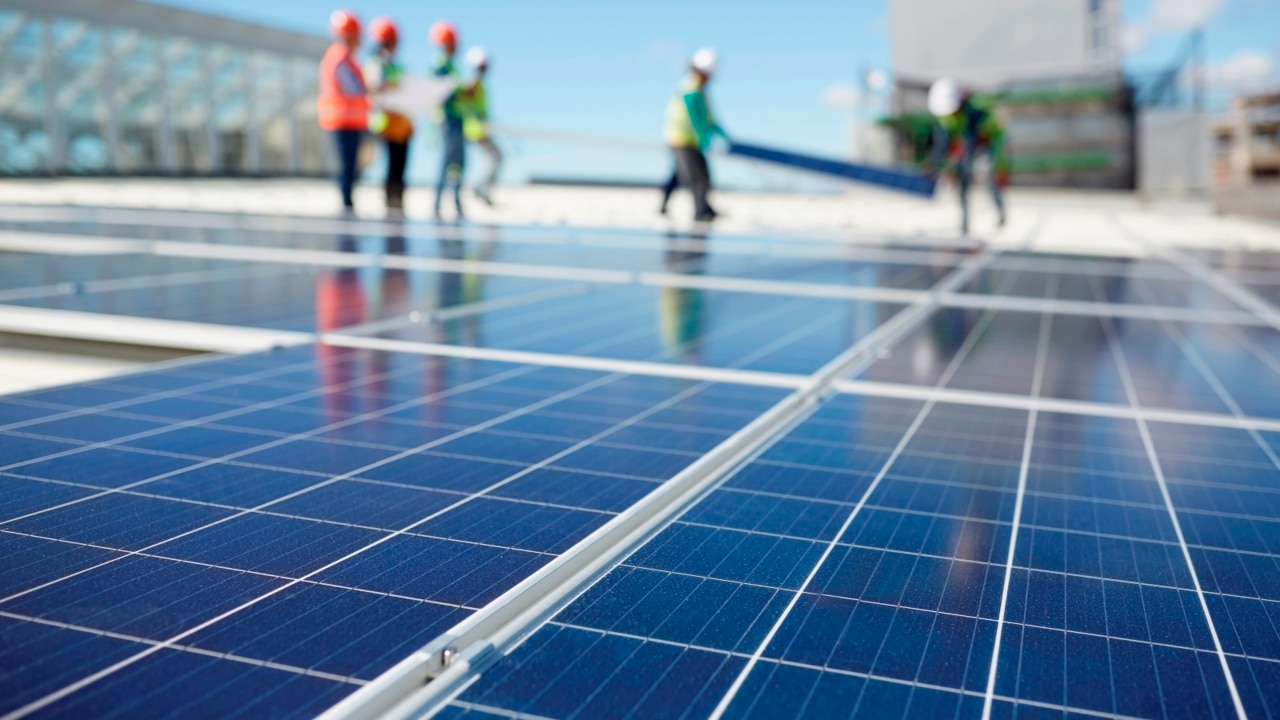Is it time to switch to solar energy as electricity prices surge?
An expected 56 per cent jump in electricity bills makes spending money on home solar systems seem smart. What do you need to know?

Surging electricity prices look set to spark another spike in home solar system uptake.
Australia already has more than three million residential solar systems – almost one-third of households – and people looking to join the renewables rush are being urged to do their homework.
Big savings are possible, but not guaranteed, experts say, and each state has different programs and incentives that should be understood.
Energy retailer Nectr’s managing director, Andrew Butler, says his firm is experiencing increased interest in home solar energy.
“Many Australians are beginning to realise that choosing a solar and battery bundle for their home now will ‘future-proof’ them for future energy price rises,” he says.
BEFORE BUYING
The recent federal budget forecast electricity price rises of 56 per cent over the next two years, and Butler says people thinking about installing home solar should consider:
• Size and capacity, as a single or couple may only require a 6.6kW system but a large family 13.3kW.
• Installation and warranties, ensuring panels are installed by a Clean Energy Council approved installer.
• The cost, taking into account options such as interest-free financing, no upfront payments and government incentives.
• Researching options, with some retailers offering interactive technology to give people a good idea of their savings before they purchase.
• Batteries, which are still a pricey part of a solar system but can store power for use later.

“As feed-in tariffs continue to decline we need to change the perception that a feed-in tariff is an added value of having solar power,” Butler says.
He says “the real value of renewable generation and storage is in not having to face high power bills following potential energy price rises”.
“By being less reliant on the energy grid, households can manage their energy usage to suit their budgets.”
New research by Money.com.au has found that almost three-quarters of Australians will invest in home improvements to cut energy costs in the next two years, with 29 per cent planning to install solar panels.
Money.com.au spokeswoman Helen Baker says many households will see a significant return on investment in solar panels.
“I have worked with clients who have seen their quarterly energy bills fall to two digits,” she says.
“It is also important for households to note that government rebates are available for solar panel installation.”
Compare the Market spokesman Chris Ford says many people are eligible for the Small-scale Renewable Energy Scheme, while some states offer other rebates too.
“Visit your state government’s website for a list of rebates, grants and incentives you may be entitled to,” he says.
COSTS
Ford says the upfront cost of solar systems vary by size and location.
“For a smaller 3kW system, you’re looking at an average cost of around $4000 … a larger system of 10kW can cost an average of $10,000 or more,” he says.
“Meanwhile, the payback time will vary between households, the solar feed-in tariff available in your area, the amount of sunlight your system receives, how much solar electricity your household uses, and the size of your system.
“The payback can be as little as four years in some locations for 4kW and 5kW systems, but as high as 12 years in other locations.”
Ford says there are still some great feed-in tariff options on the market, so it is important to regularly compare options.
He says many people assume solar will automatically reduce their power bill “but this isn’t always the case”.
“The best way to utilise your solar power is to use it during the day when it’s generated to maximise your savings.
“Where you can, operate appliances like washing machines, dryers, and dishwashers during the day when the electricity is being generated or set timers, so these appliances run at optimal times.”

SUN TAX LOOMING
• Solar panel prices have more than halved in 10 years, but battery storage is a newer technology and still relatively expensive, typically ranging from $4000 to $25,000.
• However, people who have ignored batteries in the past because they receive generous feed-in tariffs for exporting solar energy may soon change their thinking.
• From 2025, a new so-called sun tax will be charged to some households that send solar energy back to the grid.
• “You may be charged a fee to export electricity during low-demand times, such as the middle of the day when solar electricity is generated,” says Compare the Market’s Chris Ford.
• “However, you could earn more for exporting solar power when demand is high, such as afternoons and evenings. A solar battery will give you more bang for your buck if you’re looking to earn credit by exporting your solar electricity,” Ford says.
More Coverage
Originally published as Is it time to switch to solar energy as electricity prices surge?





